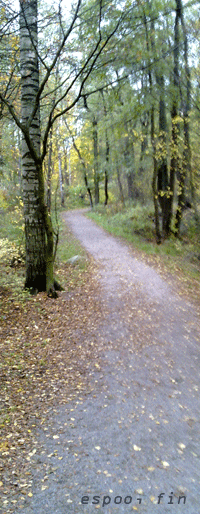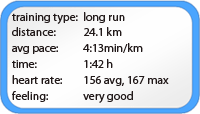 out of the office, into the running shoes. yes, still using this nice pair of adidas response shoes, they’re not so white anymore but do a superb job, now after 500km they just got warmed up. the closeby foresty patch along th ecoast line feels like a soothing oasis after a day fighing with powerpoints, portfolio implications and key trends. the gravel makes little scratching sounds at each step - until i put on the social jukebox and listened to music from the mobile running companion over the in-built speakers. always fun to observe people when running past them.
out of the office, into the running shoes. yes, still using this nice pair of adidas response shoes, they’re not so white anymore but do a superb job, now after 500km they just got warmed up. the closeby foresty patch along th ecoast line feels like a soothing oasis after a day fighing with powerpoints, portfolio implications and key trends. the gravel makes little scratching sounds at each step - until i put on the social jukebox and listened to music from the mobile running companion over the in-built speakers. always fun to observe people when running past them. ![]()
it’s the long run today, 24km in this case. the long run should be for  non-marathon training somewhere between 18 and 25km and during marathon preparation from 25 to beyond 30km, the idea is to run at a slower pace, about 80 sec/km slower than in a 10k race, and train fat burning. the relation between burning glycogen and fat shifts towards fat when running slower. one could conclude that walking must be the ultimate fat-burning excercise - sorry folks with the sticks that use to block my way, that’s an error in the logic. the total amount of burned calories (glycogen + fat) on slower kinetics goes down as well, so no chocolate cake afterwards, that’s reserved for the runner. the polar heart rate monitor clocked 1621kcal for the run, the lunch time chicken steak is definitely gone.
non-marathon training somewhere between 18 and 25km and during marathon preparation from 25 to beyond 30km, the idea is to run at a slower pace, about 80 sec/km slower than in a 10k race, and train fat burning. the relation between burning glycogen and fat shifts towards fat when running slower. one could conclude that walking must be the ultimate fat-burning excercise - sorry folks with the sticks that use to block my way, that’s an error in the logic. the total amount of burned calories (glycogen + fat) on slower kinetics goes down as well, so no chocolate cake afterwards, that’s reserved for the runner. the polar heart rate monitor clocked 1621kcal for the run, the lunch time chicken steak is definitely gone.
anyway, the long run is essential to all running, especially if you have some ambitions on what so ever distance above 400m. in addition to burning fat it increases your oxygen intake max VO2, the amount of oxygen you are capable to provide to your muscles, it maximizes stroke volume (the amount of blood ejected from the heart with each beat), and helps with new red blood cells. and finally, of course, there’s a mental angle to is as well - going out and knowing the road ahead is 24km long. the runner’s world had an article on the long run.
of course, in the end it was run too fast, that often happens when running alone, there should be a friend joining. that’s in general something that’s different here in europe’s north-east, people often prefer to run alone. very different in neighbouring countries such as sweden, where runners of all kinds of distances go together for a distance training session. or in germany and the UK, where long distance groups and clubs have popular collective sunday morning or weekday evening runs.







